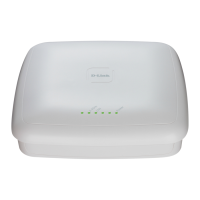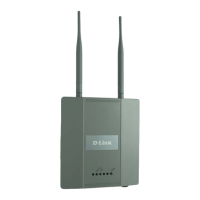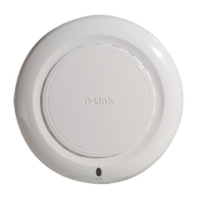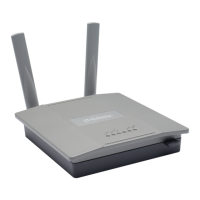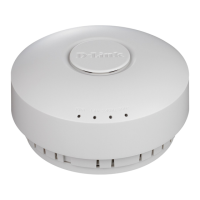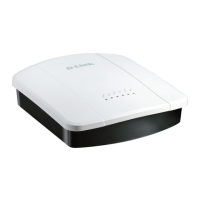Software User Manual D-Link Unified Access System
02/15/2011
Document 34CS3000-SWUM104-D10 Page 71
and assumes management. If you have not added the MAC address of the AP to the database, the AP appears in the
Authentication Failed Access Points list, and the failure type is No Database Entry.
Optionally, you can require that the AP is authenticated before the Unified Switch manages it. You can add authentication
information about the AP when you add its MAC address to the local or RADIUS database.If you enable authentication, it
takes place immediately after the switch validates the AP.
Configuring AP Authentication
Unless access to the wired network is secured with IEEE 802.1X authentication or another security mechanism, the AP
should always use authentication so that Rogue APs do not automatically associate with the switch.
If you require the AP to authenticate itself to the switch, you must perform the following three steps:
1 Enable AP authentication on the switch, which is described in this section.
2 Connect to the access point CLI and configure a pass phrase as described in “Preparing the Access Points” on page 55.
3 Enter the pass phrase in the Valid AP database.
To enter a pass phrase in the local database, see “Using the Local Database for AP Validation” on page 72. To enter a
pass phrase in the RADIUS database, see “Using the RADIUS Database for AP Validation” on page 73.
To enable AP authentication on the Unified Switch, click Administration > Basic Setup. From the Global tab, check the
AP Authentication box, then click Submit to apply your changes.
Figure 36: Requiring AP Authentication
To enable AP authentication from the CLI, access Wireless Config mode and enable authentication:
(switch-prompt) >enable
Password:
(switch-prompt) #config
(switch-prompt) (Config)#wireless
(switch-prompt) (Config-wireless)#ap authentication
Note: When a switch successfully validates an AP, it sends an AP Profile to the access point. The AP Profile
contains all of the access point configuration information, such as the radio, security, and SSID settings.You can
configure all of the AP settings before the switch validates an AP. For information about configuring the default
AP profile, see “Configuring Access Point Settings” on page 77.

